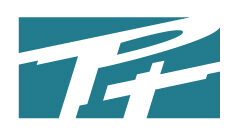For small business owners, cash flow management is often one of the biggest challenges. Despite having a profitable business model or strong customer base, cash flow problems can stifle growth, hinder day-to-day operations, and in some cases, lead to business closure.

Cash flow refers to the movement of money in and out of a business. It’s essential for covering operating expenses, paying employees, and reinvesting in business growth. However, many small businesses struggle with cash flow problems due to inconsistent revenue, delayed payments from clients, or poor financial planning.
In this blog, we’ll explore the common causes of cash flow issues, the impact they can have on your business, and actionable strategies to solve these problems. By improving cash flow management, you can ensure your business runs smoothly, grows sustainably, and stays financially stable.
Understanding the Importance of Cash Flow
Cash flow is more than just how much money you’re bringing in—it’s about when the money is coming in and whether it covers your outflows at the right time. Even profitable businesses can run into trouble if they don’t have enough liquidity to cover their expenses when they’re due. According to studies, 82% of small businesses fail due to poor cash flow management, making this one of the most pressing pain points for business owners.
A well-managed cash flow ensures that you have the financial resources needed to seize growth opportunities, avoid debt, and keep your business operational.
Common Causes of Cash Flow Problems
Identifying the causes of cash flow problems is the first step in resolving them. Below are some of the most common issues small businesses face when it comes to cash flow:
1. Late Payments from Customers
Late payments or long payment cycles can severely affect your cash flow. Many small businesses operate on a B2B basis where payment terms may be 30, 60, or even 90 days. If clients are slow to pay or consistently pay late, it can create a cash flow bottleneck, leaving you without the funds to cover your own expenses.
2. Unplanned Expenses
Unexpected expenses, such as equipment breakdowns, emergency repairs, or even legal fees, can cause a major cash flow crunch. Small businesses may not always have the cash reserves to absorb these unanticipated costs.
3. Seasonal Business Fluctuations
For businesses with seasonal revenue cycles, managing cash flow during the off-season can be a challenge. Businesses may experience a high influx of cash during their busy months but struggle to maintain a positive cash flow during slower periods.
4. Poor Financial Planning
Without a clear understanding of your cash flow and future needs, it’s easy to run into problems. Many small business owners don’t track cash flow projections accurately or fail to plan for future expenses, leading to shortfalls when they’re least expected.
5. Inventory Management Issues
For businesses that sell products, holding too much inventory ties up cash that could be used for other expenses. On the flip side, too little inventory can result in lost sales, which also affects cash flow.
The Impact of Cash Flow Problems on Small Businesses
The effects of poor cash flow management can be devastating. Below are some of the negative consequences small businesses face when they experience cash flow issues:
Difficulty Paying Bills: If you don’t have enough incoming cash to cover your outgoing expenses, you may struggle to pay bills, vendors, or employees on time. This can damage relationships with suppliers and lead to operational difficulties.
Missed Growth Opportunities: Without sufficient cash flow, you may miss out on key opportunities to expand your business, invest in new equipment, or take on lucrative new projects.
Accumulating Debt: Many small businesses rely on loans or credit to manage cash flow shortfalls. While debt can be a useful tool, relying too heavily on borrowed funds increases your financial risk and may lead to insolvency.
Business Failure: Cash flow is the lifeblood of any business. Consistent cash flow issues can ultimately lead to business closure if they aren’t addressed promptly.
Strategies to Solve Cash Flow Problems
Addressing cash flow challenges requires a combination of proactive management, improved financial planning, and efficient business processes. Below are proven strategies that small business owners can implement to improve their cash flow.
1. Invoicing Best Practices
Improving your invoicing process can help you get paid faster, reducing the time between when you complete a job and when you receive payment.
Invoice Promptly: Send invoices as soon as a job or service is completed to avoid payment delays.
Shorten Payment Terms: Instead of offering 30- or 60-day payment terms, consider reducing it to 15 or 20 days.
Use Electronic Invoices: Switching to digital invoicing platforms can speed up the payment process by allowing clients to pay online.
Offer Incentives for Early Payment: Offering discounts for early payments or charging late fees for overdue invoices can encourage clients to pay on time.
2. Improve Cash Flow Forecasting
Accurate cash flow forecasting allows you to predict when cash shortages or surpluses may occur, giving you time to plan accordingly. By reviewing your cash flow regularly, you can make informed decisions about when to cut expenses, seek financing, or invest in growth.
Monitor Cash Flow Regularly: Regularly tracking and reviewing your cash flow helps you stay ahead of potential issues.
Prepare for Seasonal Fluctuations: If your business is seasonal, create a cash reserve during high-revenue months to cover expenses during slower periods.
Use Cash Flow Forecasting Tools: Tools like QuickBooks or Xero can automate cash flow tracking and help you generate projections.
3. Negotiate Better Terms with Vendors
If your customers are paying you late, but you still have immediate bills to pay, cash flow becomes an issue. One solution is to negotiate better payment terms with your suppliers to improve your working capital.
**Ask for Longer Payment Terms
Ask for longer payment terms with your vendors, such as net 45 or 60 days, to give yourself more time to receive payments from customers before your bills are due.
Negotiate Discounts for Early Payments: If you have the cash available, ask your suppliers for a discount in exchange for early payment. This can reduce your costs and improve your cash flow over time.
Consolidate Purchases: If possible, buy in bulk to negotiate better prices or terms with your suppliers. This strategy works particularly well for recurring inventory purchases or raw materials.
4. Use a Business Line of Credit
A business line of credit is a flexible financing option that allows you to borrow money as needed, up to a pre-approved limit. Unlike traditional loans, you only pay interest on the amount you borrow, making it a useful tool for managing short-term cash flow issues.
This can be especially helpful when dealing with seasonal fluctuations, late payments from clients, or unexpected expenses. It’s important to use the line of credit responsibly, paying it back as soon as possible to avoid long-term debt accumulation.
5. Leverage Invoice Factoring
For businesses struggling with late payments, invoice factoring can provide immediate relief. Invoice factoring is a financial service that allows you to sell your unpaid invoices to a factoring company in exchange for immediate cash (minus a fee). This option can free up cash tied to outstanding invoices, allowing you to pay your bills and continue operating without waiting for customers to pay.
While factoring can help in the short term, it’s essential to consider the costs involved and ensure it aligns with your business’s long-term financial health.
6. Reduce Overhead Costs
One of the most effective ways to improve cash flow is to cut unnecessary expenses. By streamlining your operations, you can free up more cash to cover essential costs or invest in growth.
Audit Your Expenses: Review your operating costs and identify areas where you can reduce expenses without negatively affecting your business.
Switch to Cloud-based Solutions: Cloud-based services for accounting, CRM, and project management are often more cost-effective than traditional software, helping you save on software licenses and IT infrastructure.
Outsource Non-Core Functions: Instead of hiring full-time employees for tasks like marketing, bookkeeping, or IT support, consider outsourcing to freelancers or agencies. This allows you to scale these services according to your cash flow without committing to fixed salaries.
7. Diversify Revenue Streams
Relying on a single product or client for the bulk of your revenue can be risky. If that client pays late or if sales of that product decline, your cash flow could suffer. Diversifying your revenue streams can help ensure consistent cash inflows, even if one segment of your business experiences a downturn.
Expand Product or Service Offerings: Consider adding complementary products or services that appeal to your current customers. For example, if you own a retail store, you might offer subscription boxes or online consultations to generate additional revenue.
Explore Recurring Revenue Models: If possible, implement a subscription-based model or offer retainers for your services to ensure consistent cash flow. This provides predictable monthly income and can smooth out seasonal fluctuations.
8. Create a Cash Reserve
A cash reserve is a financial safety net that helps you weather unexpected challenges or downturns in your business. Building up a cash reserve during high-revenue periods allows you to cover expenses during slower months or when cash flow is tight.
Set Aside a Portion of Revenue: Aim to save at least 10-20% of your revenue during peak months to build up a reserve for leaner periods.
Use Reserve Wisely: Only tap into your cash reserve when necessary, such as for emergency expenses or temporary cash flow gaps.
Conclusion
Cash flow management is a critical component of running a successful small business. While cash flow issues are a common pain point for many business owners, there are proactive steps you can take to address them and ensure your business remains financially stable.

By improving your invoicing practices, leveraging financing options like lines of credit or invoice factoring, and cutting unnecessary expenses, you can create a cash flow management system that supports growth and reduces financial stress
Taking control of your cash flow today will help your business stay resilient, navigate challenges, and seize future opportunities. Implementing these strategies will not only solve immediate cash flow problems but also strengthen the overall financial health of your business, allowing you to thrive in the long term.
The Wealth Signal: Amplifying Your Ability to Attract Success
Book Your Free 30-minute Business Breakthrough Session: Unlock Hidden Profits Today!
Business Growth with Credit Suite: Your Path to Better Credit and Financing
Here’s a little transparency: Our website contains affiliate links. This means if you click and make a purchase, we may receive a small commission. Don’t worry, there is no extra cost to you. It’s a simple way you can support our mission to bring you quality content.

